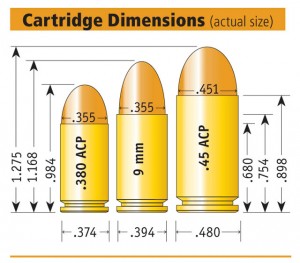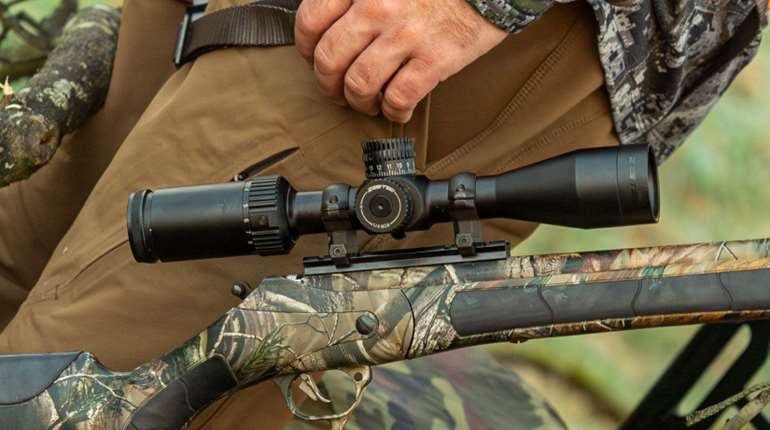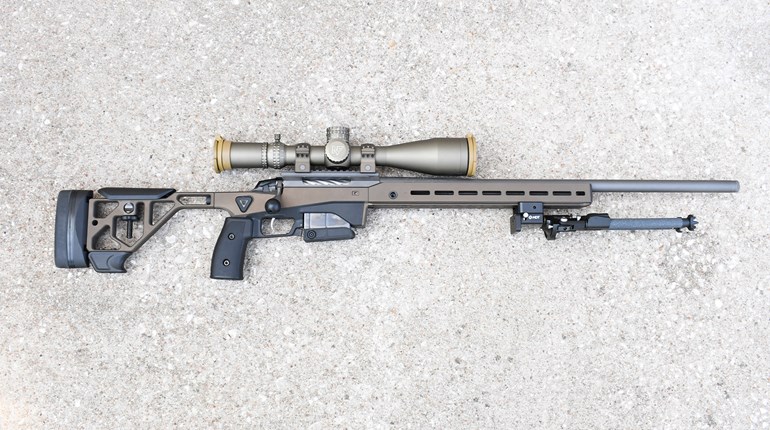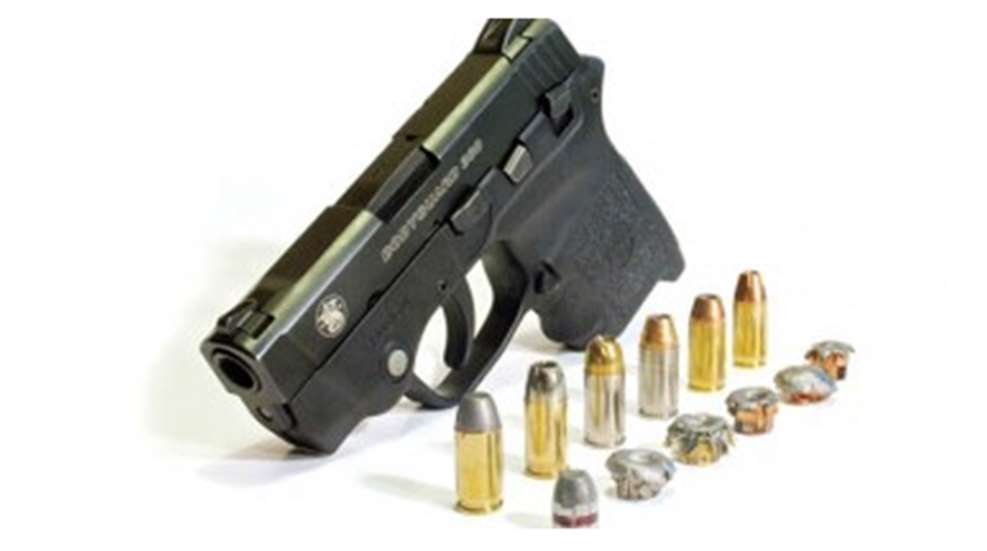
The .380 ACP has been with us for more than 100 years. It's also known as the .380 Auto, 9 mm Browning Short, 9 mm Corto, 9 mm Kurz or 9x17 mm. Corto is Italian, Kurz is German; both translate to "short" in English. Because of these European names, some mistakenly believe the .380 ACP is a shortened version of the 9 mm and that it originated across the big pond. It may have gained popularity overseas, but the .380 ACP is an American cartridge.
While both the .380 ACP and the 9 mm use the same .355-inch diameter bullet, the .380 ACP case is smaller in diameter. Its rim measures .374 inch and the rim of the 9 mm measures .394 inch. The 9 mm case is also longer by .074 inch and was introduced six years prior to the .380 ACP. To further differentiate the two, the .380 ACP is loaded to an average pressure of 21,500 psi. The 9 mm has a maximum average pressure rating of 35,000 psi and 38,500 psi for +P loads.
The .380 ACP was designed by John Browning for a Colt pistol sometime around 1908. The confusing thing—at least to me—is why Browning didn't just shorten a 9 mm case? No doubt he had one on his workbench. This is possibly because when shortened, 9 mm case walls would be too thick to accept the .355-inch bullet without bulging. Still, Browning could have gone with the 9 mm exterior case dimensions and just thinned the case walls. He didn't.
There is a more plausible explanation I stumbled upon while playing with a calculator. While my hypothesis is mere conjecture, I've yet to find anyone who can offer convincing evidence to the contrary. A .355-inch diameter bullet is about 78 percent the size of the .451-inch diameter bullet used in the .45 ACP cartridge, which Browning had already developed. If you take all the dimensions on a .45 ACP case and reduce them proportionally, guess what? You end up with a .380 ACP. In essence, a .380 ACP is 78 percent of a .45 ACP.
This makes perfect sense and is similar to what Browning did when developing the M2 machine gun in .50 caliber. The .50 BMG cartridge is very proportional to the .30-'06 Sprg.; a cartridge Browning did not design, but he did subsequently design a machine gun chambered for it.
The .380 ACP has always been considered a personal-defense cartridge. It's really not suited for anything else. When I was working the street, I knew several officers who carried a .380 ACP as a backup. For the most part, these guns were no smaller or lighter than a Smith & Wesson Chiefs Special revolver. Nor did they offer any advantage in capacity. Probably the most well known models were the Walther PP and PPK made famous by super spook James Bond. The Walthers operated on the blowback principle with a fixed barrel, but the new trend of super compact .380 ACP pistols like the Ruger LCP, Smith & Wesson Bodyguard, SIG P238 and the reintroduced Colt Mustang is to utilize a locked breach.
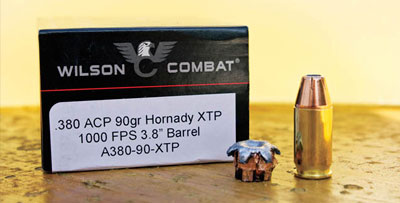
The locked breach allows use of a lighter recoil spring, making it much easier to cycle the slide. On some blowback .380 ACP pistols the slide is so hard to operate, shooters can look like a monkey trying to start a lawn mower when they load or unload.
Regardless of the handgun and thought process Browning followed when designing this cartridge, it has seen a tremendous resurgence. You can attribute this to politics or the increased desire for compact, concealable firearms. It matters not. Right now, .380 ACP ammunition and .380 ACP handguns are as popular as SEAL Team Six.
Mike McNett with DoubleTap ammunition told me, "We saw a slight increase in 2008. The largest increase was in 2009—we tripled sales from the previous year. In 2010, we saw a 30-percent increase due to our introduction of the 80-grain TAC-XP load, which was designed with the newest compact .380s in mind."
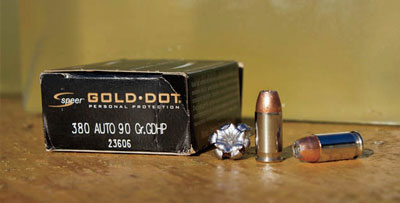
The story's the same no matter the manufacturer. According to Neil Davies with Hornady, "We have always had great numbers for .380 Auto ammunition, but the pocket-pistol craze and our Critical Defense ammo introduction happened at roughly the same time as the last presidential election. The demand ever since has been simply unprecedented. It really hasn't slowed down."
This is great news for those who make itty-bitty handguns or the ammunition to feed them, but it's also good for consumers. We now have more .380 ACP handguns than ever from which to choose and a very diverse selection of ammunition to stuff in these pistols we're stuffing in our pockets.
The real question is if this cartridge is indeed suitable for personal protection. I'm going to sidestep that debate, not because I'm afraid to take a stand, I'd just rather allow you make up your own mind. I will say, however, I strongly believe any gun is better than no gun when you are in a situation where you really need one.
I tested 14 different .380 ACP loads in 10-percent ordnance gelatin. What you'll have to do is decide how to interpret the data to help you choose a suitable load. I can tell you, based on these tests and others I've conducted, the .380 ACP is not in the same class as the 9 mm, .40 S&W or .45 ACP, but terminal performance is comparable to many .38 Spl. loads.
One way to compare these loads is to consider the crush cavity created by the bullet. This is easy to calculate; it's like the volume of a cylinder representing how big the bullet got and how deep it went. I did this calculation for each load, but did not consider penetration beyond 18 inches. After all, few bad guys are thicker than that. The problem with this method is it makes Remington's 88-grain load—which failed to expand at all—seem identical in performance to the much faster, flat-nose hard-cast load from Buffalo Bore. Looking through shot gelatin blocks at the damage each of these bullets caused, this was obviously not the case.
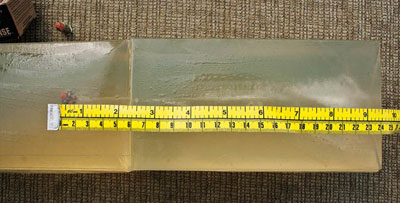
Ideal penetration depth is debatable, anyway. The FBI considers 12 inches the minimum. However, the FBI's bullet selection process is heavily weighted toward bullets that shoot through things better than they damage tissue, and bullets that look good to the FBI are not the optimum choice if you are worried about over-penetration or desire maximum tissue damage.
If penetration means the most to you, decide on a minimal acceptable depth and rule out any load that does not reach that threshold. Of those remaining, you could select the load that creates the largest crush cavity. The 102-grain Remington Golden Saber load seems to be a clear winner, but what the chart doesn't show is the minimal damage inflected on the gelatin block beyond the crush cavity due to the load's low velocity. This is especially true when compared to the wide-expanding, higher-velocity loads. Kinetic energy is another way to compare these loads, but energy is also a good indicator of recoil.
The mistake is to base your choice on only one of these factors. Ideally, you want a load that penetrates deep enough, hits hard, damages a lot of tissue and is also reliable and controllable in your handgun.
The number-one requirement is reliability. I ran at least one box of every load through the Smith & Wesson Bodyguard. For loads where I had extra ammo, I fired that as well. In all, more than 300 rounds were put through the little Smith without a single malfunction. This could be a testament to the gun, ammo or both.
Another consideration is recoil. Some believe recoil is a non-issue in this type of handgun. After all, it's not a gun you will generally shoot in a recreational fashion. However, as a firearms instructor I've seen adverse recoil manifest itself in very poor accuracy. Will your memory of the uncomfortable recoil make you flinch?
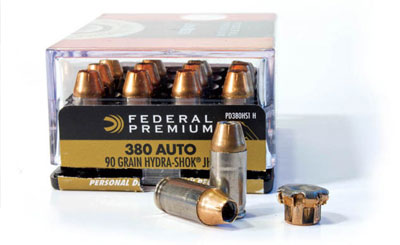
Recoil impulse in foot-pounds was calculated for each load as if fired from a Smith & Wesson Bodyguard. Interesting data, but not near as helpful as actually shooting the load in your handgun because the recoil variance is quite extreme. The Winchester SilverTip load was a joy to shoot out of the .75-pound Bodyguard, but the +P Buffalo Bore loads felt like you had a tiger by the tail.
SAAMI does not recognize +P .380 ACP loads. According to Western Powders Lab, where pressure testing is conducted for many ammunition manufacturers, most factory .380 ACP loads generate a maximum average pressure about 3,000 PSI below the SAAMI maximum. Granted, compliance with SAAMI standards is voluntary, but there are very few +P .380 ACP loads available because of the SAAMI limit. Those from Buffalo Bore were the only ones tested.
Do .380 ACP +P loads increase terminal effectiveness? Probably. In the case of the Buffalo Bore JHP loads, the +P load increased penetration by 10 percent and the crush cavity by about 3 percent. Are they safe to shoot in your handgun? Probably.
I talked with Buffalo Bore's Tim Sundles at length about the safety issue, and he said the .380 ACP case is very strong; as strong as the 9 mm case. He has run thousands of his +P loads through every type .380 ACP pistol he can find. Regardless, recoil is intensified as is wear on the handgun. If you only shoot +P loads at bad guys, accelerated handgun wear is moot unless you live in a very, very bad neighborhood.
Handloading data for the .380 ACP is held to this same SAAMI 21,500 psi maximum, and old standby pistol powders like Unique, Bullseye and Winchester 231 will work for all bullet weights. Slower-burning powders like Ramshot's True Blue work well, too. Loading the .380 ACP requires no special attention beyond maintaining overall cartridge length and a tight case mouth to prevent bullet set-back during feeding. Avoid the temptation to create your own +P loads; minuscule increases in the powder charge can spike pressures.
Picking a .380 ACP load for carry is mostly a matter of personal preference, tempered by what you expect of a defensive handgun. If you believe the trolls that might attack you will be hiding behind windows and car doors, go with a deep penetrator. If you're recoil sensitive, go with standard-pressure loads.
One thing's for sure—never before have pocket-pistol options been so diverse, and when it comes to what pistol is the easiest to conceal and carry, the new breed of .380 ACPs have no equal. They may not be the most lethal option, but they are about 75 percent as effective as a .45 ACP. That's how it should be, because that's how Browning designed it—the .380 is a 3⁄4 .45 ACP.
